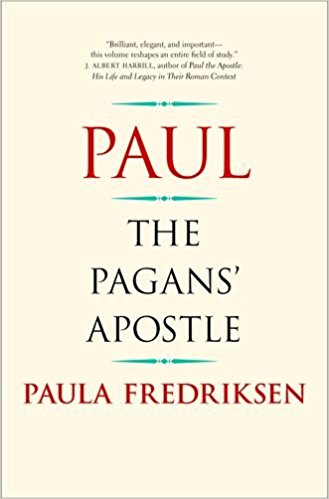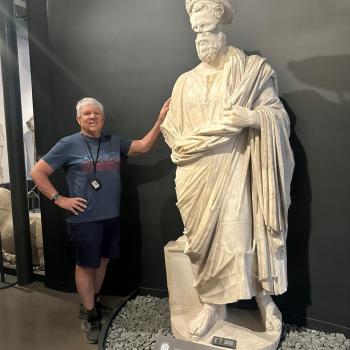One of the most important discussions, and the setting up of a taxonomy of terms comes at pp. 74-75. Here Fredricksen explains that proselytes were indeed considered Jews, that God-fearers or synagogue adherents however simply seem to have added Israel’s God to the worship of their ancestral deities. But there is this third category she conjures with— eschatological pagans, by which she means the ones foreseen in Scripture as showing up in the eschatological age and worshipping the Biblical God. These folks are ex-pagan Gentiles, who on the one hand do not any longer worship pagan gods, but on the other hand, retain their native ethnicity, not practicing circumcision, Sabbath etc.
She takes Rom. 15.9-12 with its catena of citations to be talking about Gentile inclusion in the benefits of worshipping the Biblical God including redemption, but it does not involve integration into Israel. The nations at the eschaton remain distinct from Israel. She takes Isa. 45.22 LXX for instance to be properly translated as they will turn from lesser gods to the one true God (epistrepho) but this doesn’t mean conversion to Judaism. She takes 1 Thess. 1.9 to mean the same thing. Gentiles are saved as Gentiles, they do not, at the eschaton, become Jews. And the returning of Jews from the Diaspora coincides with the turning of Gentiles to the one true God, on this model (so the evidence or urgency for missioning by Jews of Gentiles is lacking. Paul probably didn’t do this prior to his becoming a Christ follower).
She also denies the likelihood of Jewish direct missionary attempts aimed at pagans to get them to convert to Judaism, prior to the Judaizers doing so in Galatia, but she sees that as a special internal issue in the Jesus movement. She stresses that the status of the Gentiles only becomes an urgent issue for Jews if they believe the eschaton is at hand, and the apocalyptic prophecies are in play.
This is a very interesting theory, but what it does not explain is the facts on the ground in the Pauline communities themselves, which involve Jews and Gentiles united in Christ, meeting in house churches. For example, take the house church of Aquila and Priscilla mentioned in Rom. 16, and of course consider Paul’s own participation in such house churches elsewhere, including with some of his Jewish coworkers, for example in Philippi. The whole emphasis in various parts of Romans itself is intended to get Jewish and Gentile followers of Christ together, meeting and worshipping the Lord together, whereas they had basically been meeting separately since the return from exile in 54 at the death of Claudius. The goal, is Jew and Gentile united in Christ, and were that not clear enough, the baptismal formula in Gal. 3.28 makes it clear— in Christ (which is where all these followers of Christ are as the body of Christ), there is no longer Jew or Gentile, slave or free, and no male and female, for all are one in Christ. This does not mean that these distinctions simply disappear, but what it does mean is that they have no soteriological significance, and should not be a basis of separating some followers of Christ from others.













